Ever wondered how people make those incredibly detailed wooden signs, intricate acrylic keychains, or perfectly engraved laptop covers? Chances are, a laser cutter was behind it.
If you've been asking yourself, ‘What is a laser cutter, and how does it turn simple materials into such precise creations?’ you're not alone. These powerful tools have quietly become the backbone of everything from custom gifts to classroom projects and small business production lines.
In this comprehensive guide, we’ll walk you through everything you need to know about these cool gadgets—from how they work to why they’re such a game-changer for creative and educational projects.
What is a laser cutter?
A laser cutter is a computer-controlled machine that uses a high-powered beam of light (yes—an actual laser!) to cut, engrave, or mark materials with incredible precision. From wood and acrylic to leather, cardboard, and even certain metals, it can slice and etch its way through a wide range of surfaces like a digital scalpel.
Although it might sound like science fiction, laser cutters—especially desktop models—are now a practical tool in classrooms, home workshops, and creative studios. They’re safe, surprisingly easy to use, and packed with potential for education, prototyping, and small business projects.
CO2 vs. Diode: What’s the difference?
Laser cutters typically fall into two main categories: diode and CO2. Both can cut and engrave, but they each have their strengths, depending on your space, materials, and use case.
Diode lasers: Compact powerhouses
Diode lasers are smaller, more energy-efficient, and perfect for precision work. You’ll find them in machines like the Emblaser Pro and xTool S1. Here’s why they’re a popular pick:
- Compact and efficient: Easy to store and set up in schools or home studios
- Material-friendly: Great with wood, leather, cardboard, and some acrylics.
- Low maintenance: Longer lifespan and minimal upkeep
- Budget-conscious: Affordable enough for beginners, classrooms, and side hustles
Best for: Education, makerspaces, home users, and anyone just getting started.
CO2 lasers: Power and performance
CO2 lasers are your go-to if you need more cutting strength and speed, especially with thicker or denser materials.
- Stronger cutting ability: Ideal for thicker materials like hardwood and acrylic
- Supports more materials: Easily cuts clear acrylic and engraves on glass
- Larger footprint: These machines tend to be bulkier and require ventilation
- More care needed: Maintenance includes checking the optics and the water cooling system.
Best for: Commercial spaces, advanced users, and production-heavy projects.
Trusted names in Laser Cutting
At CD-Soft, we offer laser cutting brands that are trusted by schools, hobbyists, and small businesses across Australia. Here’s a look at the top players—and how they stack up.
xToolxTool delivers a diverse range of diode and CO2 laser cutters with a focus on user-friendly design, performance, and adaptability. Whether you're creating from the classroom or the workshop, there's something in their line-up for every skill level. |
 |
 |
FLUXFlux specialises in desktop CO2 laser cutters that combine intuitive design with commercial-grade cutting performance. Their range varies in size and power, from compact models to high-end systems. |
EmblaserEmblaser is an Australian-designed brand tailored for education. Known for reliability, ease-of-use, and powerful diode technology, their machines are a staple in schools around the country.
|
 |
Curious how these brands compare? We’ll be breaking that down in more detail in our upcoming guide: xTool vs Emblaser—Which Is Right for You?
Laser cutter safety classes explained
Not all laser cutters are built the same when it comes to safety, and understanding their classifications helps you pick the right machine for your space.
Laser cutters are divided into safety classes based on how enclosed the laser is and what additional precautions are needed.
Class 1 Laser Cutters
These are fully enclosed systems with built-in safety features, making them safe to use in shared spaces with minimal supervision. Most schools and educational settings will only allow Class 1 machines.
Where it fits: Classrooms, libraries, supervised learning environments.
Class 4 Laser Cutters
These machines are more open, which means they need extra safety precautions, like constant qualified supervision, protective eyewear, and controlled environments. The advantages that Class 4 products have over Class 1 products are that they allow for more add-ons and are generally less expensive.
Where it fits: Home workshops, small businesses, hobbyist studios.
If you're in a school or buying for a public learning space, Class 1 is the way to go. If you're a DIYer or setting up in your garage, Class 4 might offer more power at a lower price—just be sure you're ready for the extra safety measures.
What can you use a laser cutter for?
So, now that you’re up to speed on how laser cutters work, let’s talk about what you can actually do with one.
The short answer? A lot. Whether you’re teaching students, launching a creative side hustle, or prototyping your next big idea, a laser cutter brings those concepts to life.
Side hustle projectsLaser cutters make it easy to design, produce, and personalise products on demand. That’s why they’re so popular among makers turning hobbies into businesses. Common projects include:
Example: One crafty parent began selling personalised name puzzles during the school holidays—now it’s a full-time online business powered by a desktop laser cutter. Recommended: Class 4 (for flexibility and affordability) |
 |
 |
School & STEM projectsLaser cutters bring STEM and design subjects to life. Students can:
Example: A Year 9 STEM class designed eco-packaging prototypes from recycled cardboard. They tested durability, refined their designs, and built critical thinking skills in the process. Recommended: Class 1 (for enclosed, education-safe operation) |
Light commercial or workshop useIn small businesses and creative studios, laser cutters help streamline production:
Example: A boutique packaging brand uses a laser cutter to produce custom cardboard inserts, no need to outsource, and no minimum order headaches. Recommended: Class 4 (for flexibility and material range) |
 |
7 top tips for getting the most out of your laser cutter
Check out these handy tips to help you hit the ground running and keep your laser cutter humming like a dream:
1. Start with the right materials
Not all materials are laser-friendly. Stick to safe, non-toxic options like laser plywood (laserply), MDF, acrylic, leather, felt, and certain coated metals. Avoid anything that has chlorine in it such as PVC, as it releases nasty fumes that are very bad for you and your machine.
2. Keep it simple for smart results
When you’re just starting out, simple designs are your best friend. Clean lines and bold shapes tend to cut more smoothly and give a more polished result. Plus, they’re also easier to assemble if you're making something like puzzles, boxes, or models.
3. One test cut beats ten ruined projects
Always do a tiny test cut or engrave on scrap material before launching into a full project. Every material behaves a little differently, and a quick trial can save you time, money, and one very sad-looking coaster.
4. Keep your off-cuts
Those leftover bits are perfect for small projects like labels, tags, or decorations. Treat them like free bonus material for experimenting or creating something fun and useful.
5. A clean cutter is a happy cutter
A dusty lens or crumb-filled tray can mess with your cuts and shorten the life of your machine. Get into the habit of giving your laser cutter a quick clean after each session.
6. Experiment with settings
Don’t be afraid to play around with power, speed, and number of passes to get different effects. Want a deep engraving? Go slower. Want crisp outlines? Turn the power down a touch. The best results often come from a bit of trial and error.
7. Take fabulous photos of your work
If you’re selling or sharing your projects, good lighting and clear photos make a world of difference. Show off those clean cuts and sharp engravings.
Unleash your creative side with laser cutters from CD-Soft
Laser cutters are fantastic tools that allow students to learn by doing, combining technology and craftsmanship in ways that are both fun and educational.
At CD-Soft, we’re passionate about helping educators enhance their classrooms with cutting-edge tools. Whether you're looking to inspire your students with hands-on projects or teach them the fundamentals of design and technology, we’re here to guide you in choosing the perfect laser cutter for your needs.
Explore our full range of laser cutting and engraving solutions today, and let’s make learning even more exciting for your students!

 xTool S1 - Laser Cutter & Engraver (40W) - $2,798.99 inc GST
xTool S1 - Laser Cutter & Engraver (40W) - $2,798.99 inc GST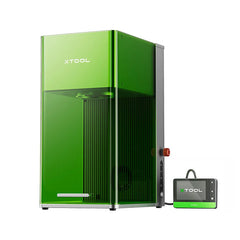 xTool F1 Ultra - Fiber & Diode Laser Engraver - $5,699.00 inc GST
xTool F1 Ultra - Fiber & Diode Laser Engraver - $5,699.00 inc GST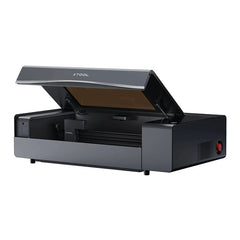 xTool P2S - Laser Cutter & Engraver (Class 1) EDU - $5,995.00 inc GST
xTool P2S - Laser Cutter & Engraver (Class 1) EDU - $5,995.00 inc GST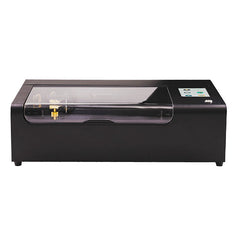 FLUX Beamo CO2 Laser Cutter & Engraver - $4,125.00 inc GST
FLUX Beamo CO2 Laser Cutter & Engraver - $4,125.00 inc GST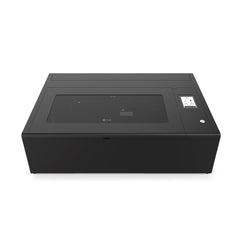 FLUX Beambox 2 CO2 Laser Cutter & Engraver - $5,797.00 inc GST
FLUX Beambox 2 CO2 Laser Cutter & Engraver - $5,797.00 inc GST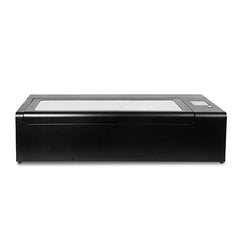 FLUX HEXA CO2 Laser Cutter & Engraver - $10,835.00 inc GST
FLUX HEXA CO2 Laser Cutter & Engraver - $10,835.00 inc GST Emblaser Pro - Laser Cutter & Engraver (60W) - $4,829.00 inc GST
Emblaser Pro - Laser Cutter & Engraver (60W) - $4,829.00 inc GST






